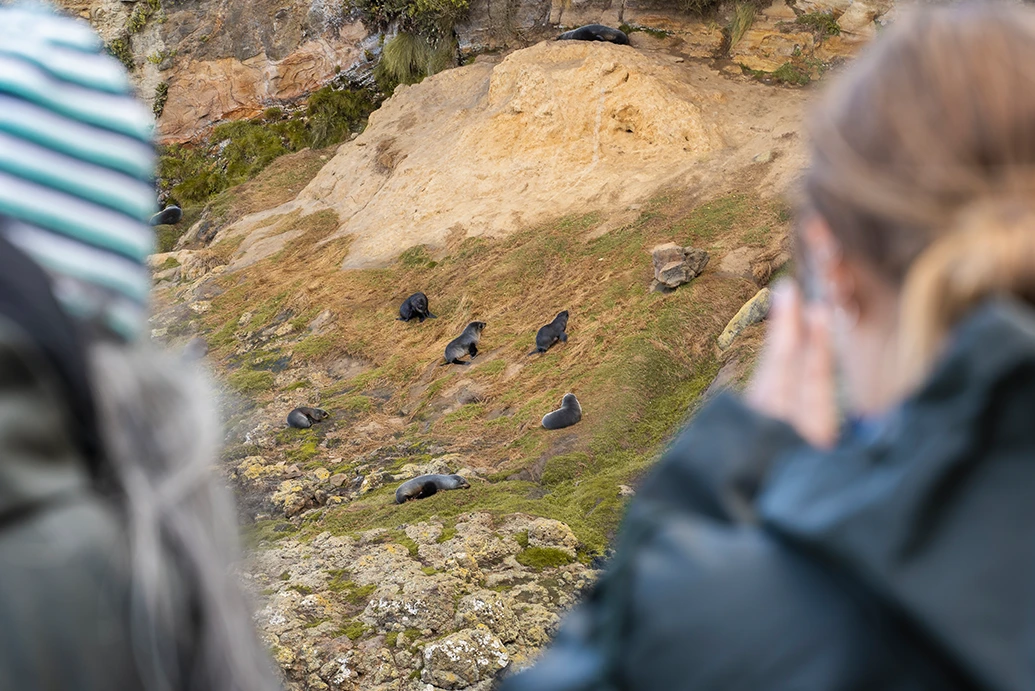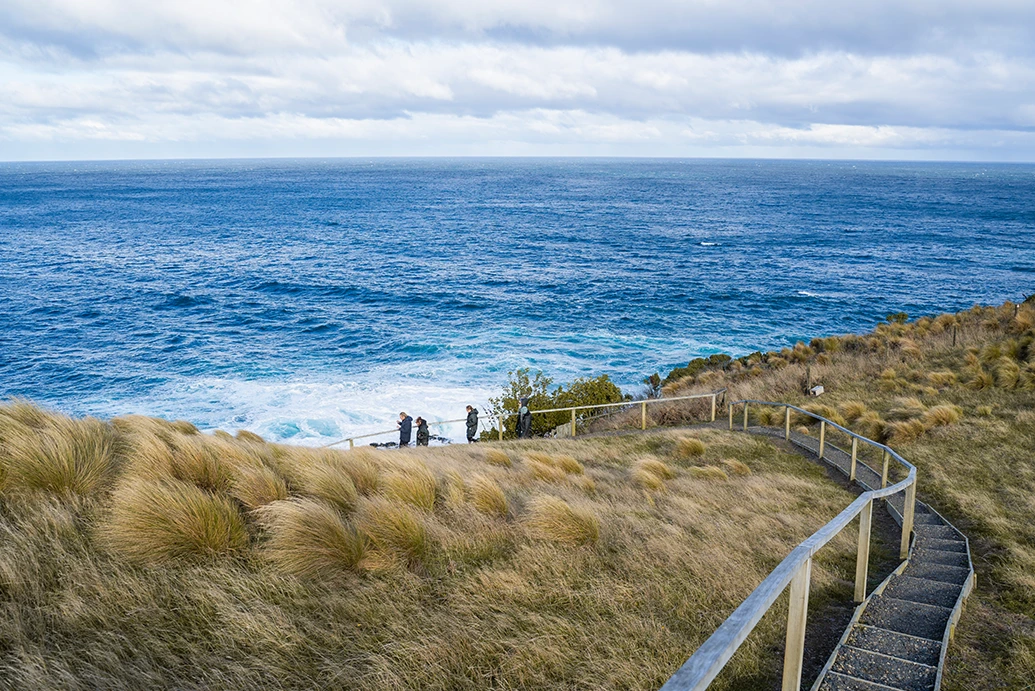Clearwater by name and by nature. For five generations, the Clearwater family have been caretakers of the pristine environment around Cape Saunders/Kaimata. Arguably home to more wildlife per square metre than anywhere in Dunedin, they are now sharing it with the world.



The tour begins in the city, the van door held open by owner and tour guide, Rachel. It starts as most tours do, some commentary of the heritage buildings, quirky history, maybe even a rare sighting of some urban wildlife (students).
We take the high road over the peninsula with a quick stop at “that Dunedin tree” – the cabbage tree on Highcliff Road. If you haven’t been to Dunedin, this gives you the chance to get your bearings, with the city, harbour and Taiaroa Head all within view.

Meandering around the estuaries, pukeko, white-faced heron and pied stilt wade in the shallows. Often overshadowed by the usual wildlife heroes, they are equally as rare and endangered, and have tons of personality. The onboard binocs come in handy here.



As we approach Papanui Inlet, the tour becomes more personal – this is Rachel’s home. It’s obvious from hearing her memories, the Clearwater roots run deep here.
The van stops on the gravel road that winds its way around the estuary. On the left, royal spoonbills slurp their food in the shallows, on the right, kingfisher nest in the clay cliffs, and in the middle of the road, Rachel’s uncle drives past, giving us a wave and a few seconds later, Rachel’s dad. Windows are wound down as they chat about the latest farm happenings – mainly weather and fences, but he does give us a tip about a falcon hiding in a tree just up ahead. An endearing interaction, showing the connection to the land and the family-nature of this business. Only in Dunedin, eh?

Arriving at Cape Sanders/Kaimata, a locked gate acts as a velvet rope – behind it, exclusive access to the Clearwater farm which envelops the hidden Papanui Beach – the real start of the tour.
First stop is a purpose-built hide, right on the cliff edge. Dozens of fur seals cling to the rocks as the wild Pacific Ocean roars below. Rachel is causally spotting albatross in the distance like she’s spotting robins in her backyard. Although, I guess this is her back yard.

Descending the farm road to the beach, giant, prehistoric-like sea lions are visible, even from this far away. At first, we thought they were rocks that had been exposed by the frequent storm swells, but as we approach them, they spring to life, and we get a front-row seat to a pack of males wrestling each other to submission.



Our tour is timed just right – the shriek of distant hoiho signal their arrival home after a long day at sea. The rowdy sea lions, however, spook the hoiho back into the water as we watch the cat-and-mouse game unfold from the dunes. The hoiho takes a wide berth and is reunited with its pals just meters in front of us, as they preen each other and screech into the sunset.
The sun dipping behind the hills is also our cue to leave this place as it was. The drive back offers a chance to reflect on the experience, the wildlife and the conservation efforts to protect them, and gave us a renewed appreciation of Dunedin as the Wildlife Capital of New Zealand.





